Chili - The Spice of Life
Chili, a beloved spice used worldwide, is a versatile ingredient that adds depth, flavor, and heat to any dish. Known for its rich, spicy kick, chili peppers come in various forms, including fresh, dried, powdered, and as chili sauce or oil. Whether you're an adventurous cook or someone who enjoys adding a touch of heat to your meals, chili products offer the perfect solution.
Fresh Chili Peppers are vibrant, juicy, and packed with heat. From mild to extremely spicy varieties, fresh chilies can be sliced, diced, or used whole to infuse dishes with their pungent aroma. Great for stir-fries, salsas, and curries, fresh chilies add a fresh and bold flavor to your meals.
Dried Chili Peppers are perfect for slow-cooking and flavor extraction. When dried, chilies intensify their heat and smokiness. You can use them whole, ground into chili powder, or rehydrate them to create sauces and soups with a complex depth of flavor.
Chili Powder is a staple in kitchens around the world. A blend of dried chili peppers and other spices like cumin and garlic, chili powder adds a punch of heat and a savory aroma to dishes. Perfect for seasoning meats, soups, stews, and even grilled vegetables, chili powder offers convenience without compromising on flavor.
Chili Sauces and Oils are excellent for those who prefer a ready-to-use option. These products combine chili with ingredients like garlic, vinegar, or sesame oil to create flavorful sauces and oils that elevate your dishes instantly. Whether you like it sweet, tangy, or fiery, chili sauces and oils are perfect for dipping, marinating, or adding to your favorite foods.
Enhance your culinary creations with chili – a bold, flavorful ingredient that brings spice and excitement to every meal!
-
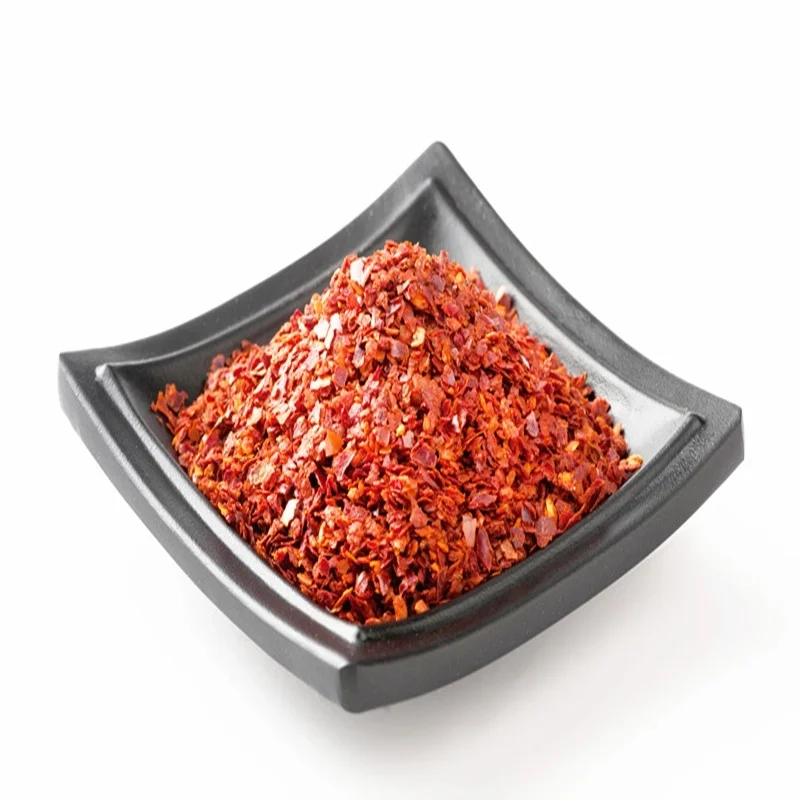
Gochugaru
2000-6000SHUKo tenei gochugaru he 100% te taiao kaore he taapiri, he pai to maatau hua mo te tiki, ina koa ki nga tohutoro kimchi Korea rongonui. I whakawhirinakihia e te maha o nga rama kimchi Korea, ko ta tatou gochugaru te whakarite i te pono me te whakarei ake i nga reka tuku iho. Whakanuia to wheako tikipi me ta maatau moni Gochugaru - te kowhiringa parakore mo te hunga e rapu ana i te kounga kore e taupatupatu ki te hanga rīhi īkara Korea tino reka me te pono. Torotoro te mauri o nga tikanga tunu kai a Korea me to tatou gochugaru tino pai, i reira ka tutuki te parakore ki nga taonga tuku iho o te hiranga pai.
-
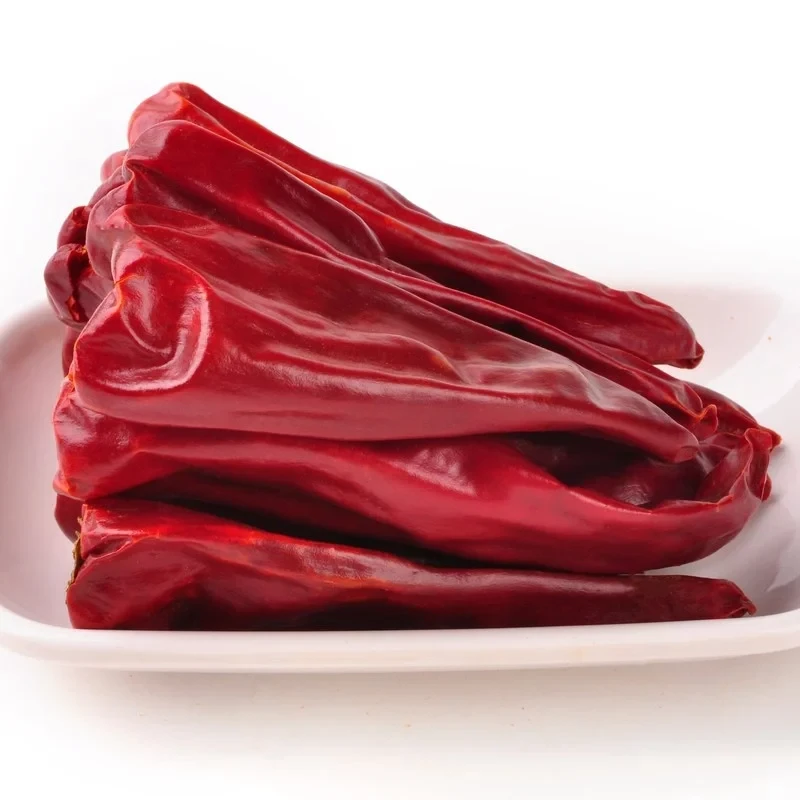
Chili Yidu maroke
3000-5000SHUKo tenei tiihi Yidu kua whakamarokehia, ka whakamarokehia e te ra, ka mau i o raatau ahuatanga taiao me nga tikanga whakaputa tuku iho, ka puta mai he taonga kai utu nui. He 100% te taiao me te kore he taapiri, e whakaatu ana i te tae whero hihiri, te reka ahurei, te raukikini rite, me te kounga tino pai. He mea whakakakahu pai mo te hauora, ka taea e nga kaihoko te whakatika i te taumata o te raukikini i roto i a raatau rihi kia rite ki o hiahia. Ko nga ahuatanga motuhake o a tatou tiihi Yidu maroke he mea tino pai, he pai hoki mo te hunga kaingākau ki te tunu kai.
-
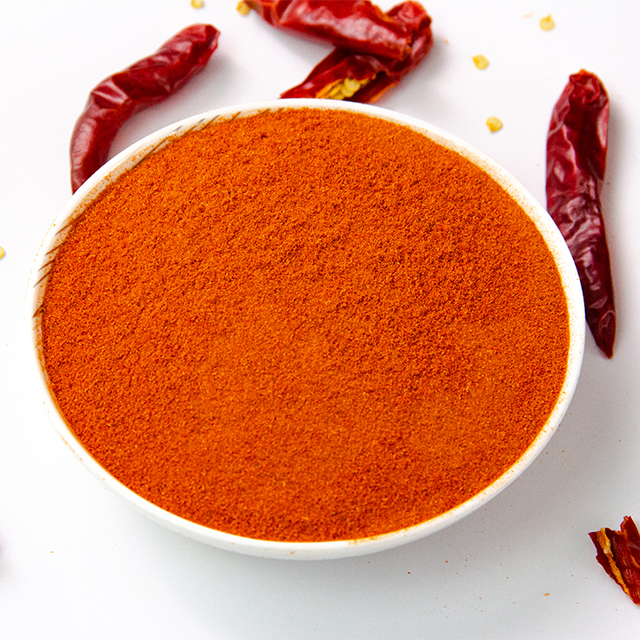
Tiihi paura-10,000-15,000SHU
10,000-1,5000SHUKo tenei paura tiihi he mea kakara tino pai hei taapiri i te pupuhi o te reka me te wera ki nga momo momo rihi. I ahu mai i nga pepa tiihi pai rawa atu, he mea hanga to maatau hua ki te whakatutuki i nga paerewa teitei o te kounga me te reka.
-
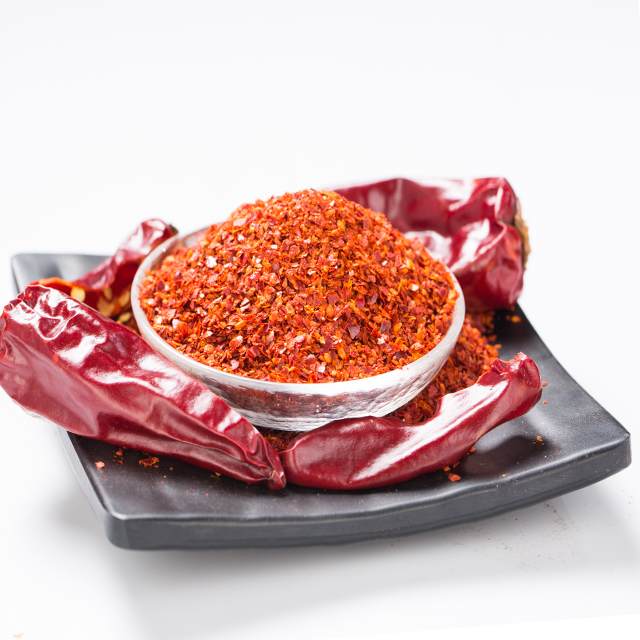
Paprika reka kua kurua
Ehara i te raukikiniKo tenei paprika reka he 100% parakore, kaore he waahi, he koriri, he Sudan Whero. Ko ta maatau hua te whakapumau i te ma me te hiranga, me te whakarite he taapiri reka ki o rihi. Kaore he koha me te mana o te kounga pai, ka tu hei whiringa pono mo te hunga kaingākau ki te tunu kai. Whakanuia o mahi tunu kai me ta matou paprika reka utu nui kua kuru, e tuku ana i te kounga o te kounga me te whakakorikori, te kohakore ki o tohutaka tino pai. Whakawhirinaki ki te ma o a maatau hua mo te wheako kai pai me te reka.
-
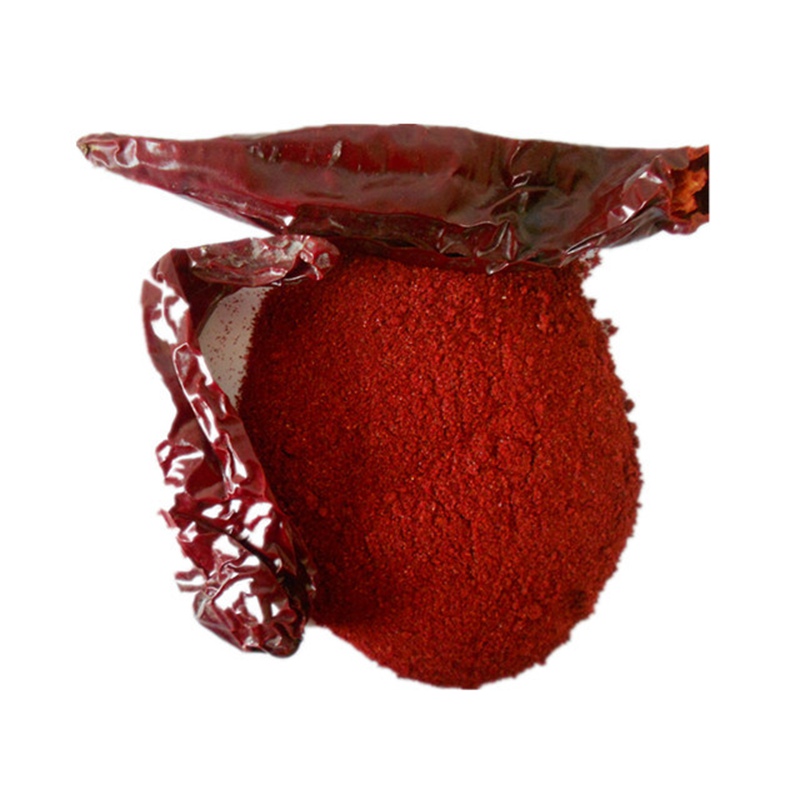
Te paura paprika reka
Ehara i te raukikiniKo tenei paura paprika reka he 100% te taiao kaore he taapiri, e whakaatu ana i te tae whero hihiri, te reka ahurei me te kounga pai. He mea raukikini kore e taea te whakamahi hei whakaniko i te tae o nga rihi, kia pai ai te titiro. Ko nga ahuatanga motuhake o ta tatou paura paprika reka he mea tino pai, he pai hoki mo te hunga kaingākau ki te tunu kai.
Ko ta maatau paura paprika reka e tuku ana i nga whiringa taapiri mo nga tae rereke, me te kapi. kei te kaha taatau ki te whakatutuki i nga hiahia whakaritenga rereke.
-
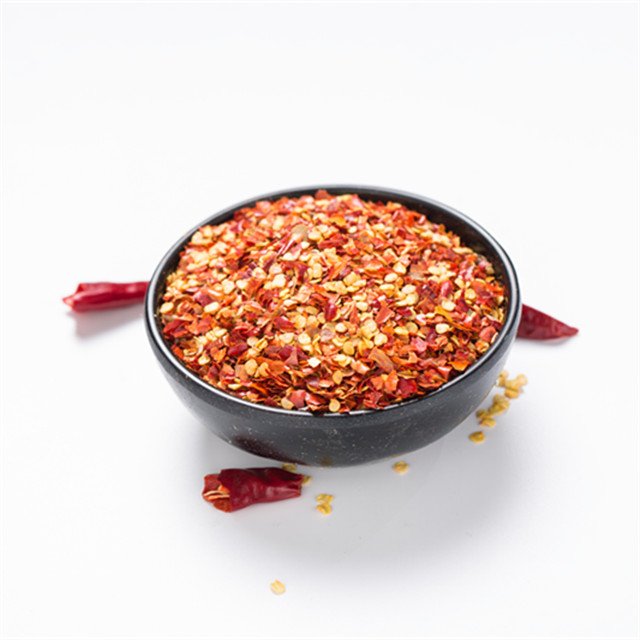
tiihi kuru-40,000-50,000SHU
40,000-50,000SHUKo ta matou wheketere he waahi o nga mea kakara, he maha nga momo hua, tae atu ki te pepa whero kuru, te paura tiihi, te tiihi maroke, te poro tiihi, me te hinu tiihi. Ko ta matou rarangi hua nui e whakatutuki ana i nga momo matea kai, mai i te taapiri i te whana ahi ki nga pizzas me nga rimurapa ki te whakauru i nga mea reka ki roto i nga hupa me nga hupa. Ko ia hua i roto i ta maatau kohinga kua whiwhi i te tiwhikete EU nui, e whakaatu ana i to maatau pumau ki te kounga. Whakanuia o mahi tunu kai me a matou mea kakara utu nui, he mea hanga mo te whai kiko me te pono, me te whakarite i te wheako harikoa me te reka ki ia ahuatanga kihini.
-
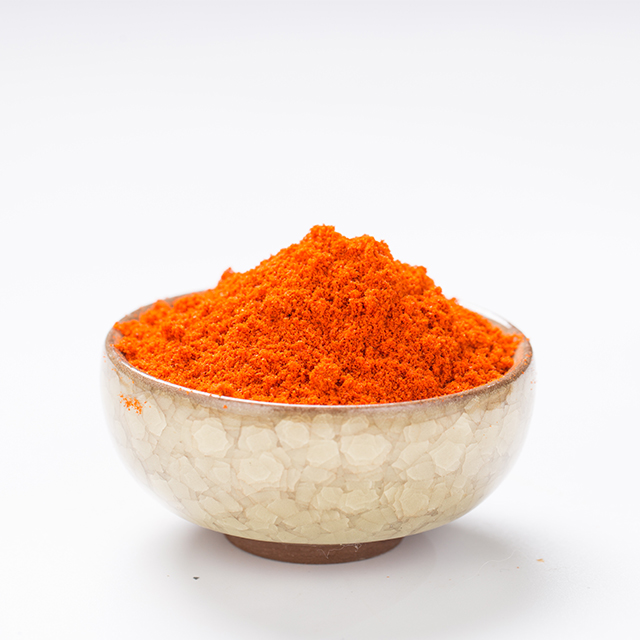
tiihi paura-600,000SHU
60,0000SHUKo tenei paura tiihi he 100% maori kaore he taapiri, e whakaatu ana i te tae whero hihiri, te reka ahurei, te raukikini rite, me te kounga pai. He mea whakakakahu pai mo te hauora, ka taea e nga kaihoko te whakatika i te taumata o te raukikini i roto i a raatau rihi kia rite ki o hiahia. Ko nga ahuatanga motuhake o ta matou paura tiihi he mea tino pai, he pai hoki mo te hunga kaingākau ki te tunu kai.
Ko ta maatau paura tiihi he whiringa taapiri mo nga taumata raukikini rereke, nga tae me te kapi. kei te kaha taatau ki te whakatutuki i nga hiahia whakaritenga rereke.
-
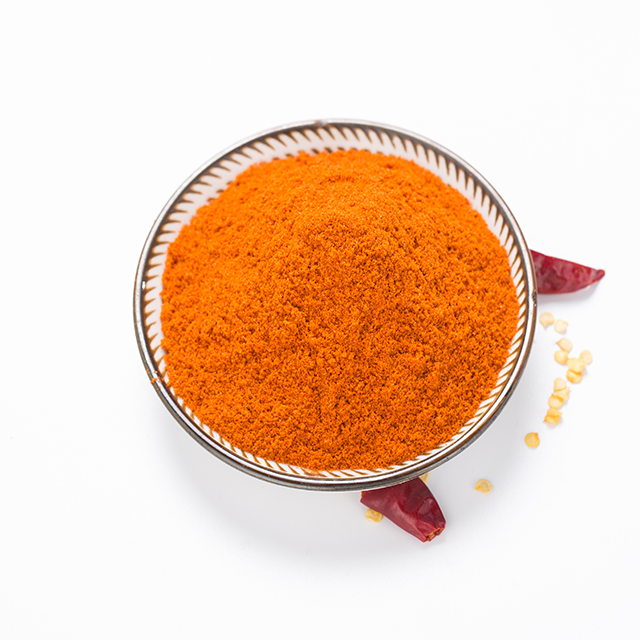
tiihi paura-70,000-80,000SHU
70,000-80,000SHUKo tenei paura tiihi he rongonui mo tona kounga teitei, he parakore me te kore he taapiri. E whakahīhī ana mātou ki te tuku hua ki runga ake i ngā paerewa, ka whai hua mai i te maha o nga kaweake ki te United States, European Union, me era atu iwi. Whiriwhiria ta maatau paura tiihi mo te wheako kai utu nui, e tohuhia ana e te tino reka me te pono ki te kounga i whakapumautia ai matou hei kaiwhakarato pono ki nga maakete o te ao.
-
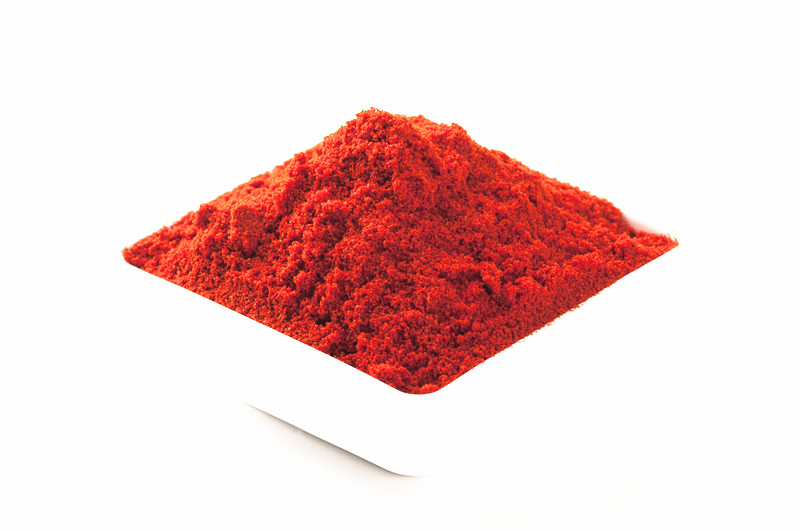
tiihi paura-50,000SHU-60,000SHU
50,000-60,000SHUKo tenei paura tiihi he mea tino pai - he parakore, he taapiri-kore, he gluten-kore. I ahu mai i nga pepa tiihi tino pai, ka whakamanahia e a maatau hua he wheako kakara pono. Karekau mai i nga taapiri me te pumureti, he pai te pa ki o mahi kai. Whiriwhiria ta matou paura tiihi mo te reka parakore me te mahinga kai hauora!
What Is The Trick To A Good Chili?
Chili, a beloved spice used worldwide, is a versatile ingredient that adds depth, flavor, and heat to any dish. Known for its rich, spicy kick, chili peppers come in various forms, including fresh, dried, powdered, and as chili sauce or oil. Whether you're an adventurous cook or someone who enjoys adding a touch of heat to your meals, chili products offer the perfect solution.
Fresh Chili Peppers are vibrant, juicy, and packed with heat. From mild to extremely spicy varieties, fresh chilies can be sliced, diced, or used whole to infuse dishes with their pungent aroma. Great for stir-fries, salsas, and curries, fresh chilies add a fresh and bold flavor to your meals.
Dried Chili Peppers are perfect for slow-cooking and flavor extraction. When dried, chilies intensify their heat and smokiness. You can use them whole, ground into chili powder, or rehydrate them to create sauces and soups with a complex depth of flavor.
Chili Powder is a staple in kitchens around the world. A blend of dried chili peppers and other spices like cumin and garlic, chili powder adds a punch of heat and a savory aroma to dishes. Perfect for seasoning meats, soups, stews, and even grilled vegetables, chili powder offers convenience without compromising on flavor.
Chili Sauces and Oils are excellent for those who prefer a ready-to-use option. These products combine chili with ingredients like garlic, vinegar, or sesame oil to create flavorful sauces and oils that elevate your dishes instantly. Whether you like it sweet, tangy, or fiery, chili sauces and oils are perfect for dipping, marinating, or adding to your favorite foods.
Enhance your culinary creations with chili a bold, flavorful ingredient that brings spice and excitement to every meal!
Why Are Peppers Called Chili?
The term "chili" is often used to refer to various types of hot peppers, but its origin and usage are a bit more complex. Here’s why peppers are called "chili":
1.Etymology from Nahuatl (Aztec language):
The word "chili" comes from the Nahuatl language, which was spoken by the Aztecs and other indigenous peoples in Mesoamerica. In Nahuatl, the word for pepper is "ch? lli". The Aztecs and other native groups in Central and South America cultivated and used chili peppers long before Europeans arrived, and they were integral to their cuisine.
When Spanish explorers encountered these peppers in the Americas in the 15th and 16th centuries, they adopted the Nahuatl word "ch? lli" to describe them. The term eventually made its way into other languages, including English, where it became commonly used.
2. Naming Confusion and Global Spread:
The word "chili" is used differently around the world. In many places, "chili" refers to the fruit of the Capsicum plant, which can be used fresh, dried, or powdered to add heat to food. However, when used in the context of chili con carne (the famous spicy stew), the name "chili" specifically refers to the dish made with ground meat, chilies, beans, tomatoes, and spices.
In the U.S. and many English-speaking countries, the term "chili" has become synonymous with hot peppers, especially Capsicum annuum, which includes common varieties like jalapenos, serranos, and cayennes. However, in other parts of the world, like India and some parts of Asia, the term "chili" often refers to the spicier varieties of Capsicum that are commonly used in their cuisines.
3. "Chili" vs. "Chili Pepper":
In the 17th century, when Christopher Columbus brought the peppers back to Europe, they were initially thought to be a type of pepper (which they resemble in taste and appearance). The name “pepper” had already been used to describe the spicy fruit of the Piper nigrum plant (black pepper), and this led to the widespread use of the term "pepper" for the Capsicum family, despite them being botanically unrelated. Over time, the term "chili pepper" was adopted in many languages to differentiate the spicy peppers from black pepper.
In this sense, "chili" became shorthand for chili pepper, the pepper that imparts heat, especially from the Capsicum family, which includes many varieties of peppers that vary in heat intensity.
4. Cultural Influence and Usage:
The spread of chili peppers around the world, particularly after the Columbian Exchange (which was the exchange of plants, animals, and cultures between the Americas and the Old World), played a significant role in shaping global cuisine. As chili peppers became more commonly used in a wide range of dishes, the name “chili” was often applied to dishes and recipes that incorporated these peppers, such as chili con carne, chili oil, and chili sauce.
In summary, "chili" is derived from the Nahuatl word for pepper, "ch? lli", and has evolved in usage due to its widespread adoption in cuisines around the world. It’s used to refer to both the pepper itself and the dishes made with it, particularly those that are spicy and contain peppers.








